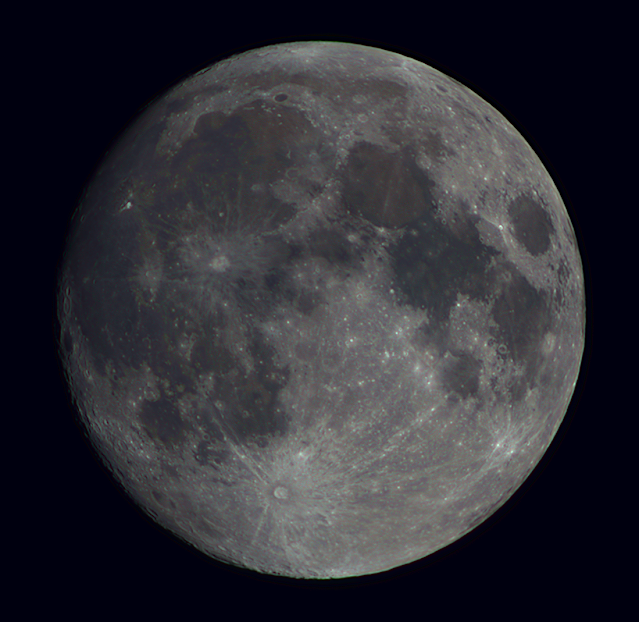Christmas Feature Release of AstroDMx Capture for all platforms. Version 1.3.14.0
Nicola has released a new version of AstroDMx Capture for Windows, macOS and Linux (including the raspberry Pi)
Readers may remember from my previous post entitled ‘Why do they do these things’ That Apple had made changes such that astronomical image capture software was unable to connect to UVC cameras in macOS 12, Monterey. Cameras impacted were devices such as the SV105 and the SV205.
Nicola has made a solution to this problem and this is available in the new feature release of AstroDMx Capture for macOS. The number of reports that came in from users indicates that there is a significant number of macOS users of these UVC cameras. Thankfully Nicola has solved this problem. It is to be hoped that Apple will undo the damage they have caused if it was unintentional. If however, it was intentional then at least Nicola’s solution circumvents the problem, The problem only affects UVC cameras and does not affect proper USB astronomical cameras, or even enhanced UVC astronomical cameras such as DMK, DFK and DBK cameras from The Imaging source. However, UVC webcams and devices like the SV105 and SV205 are affected.
The problem associated with the Pi cameras for Raspberry Pi computers running the Bullseye version of Raspberry Pi OS has not been resolved, and can’t be resolved until suitable support in terms of software and documentation are provided. However, the Raspberry Pi Foundation are keeping the Buster version of Raspberry Pi OS as a legacy version for people to use until the Pi Camera problems are resolved.
Notable changes in version 1.3.14.0
- Added: Touptek Camera Support -- all thermal controls implemented including dew heater control.
- Added: Omegon Pro Camera support for all thermal controls implemented including dew heater control.
- Added: Bresser Camera support.
- Added: Dew heater setting to capture log.
- Added: Fan control setting to capture log.
- Added: Target sensor temperature setting to capture log.
- Added: Function to capture and save Bias frames along with the Master Bias frame.
- Added: DMx white balance imaging dimming compensation.
- Changed: Complete rewrite of the Capture log.
- Changed: Master calibration frame now called Master instead of Average.
- Changed: DMx White Balance value is now written to the capture log.
- Fixed: Frame calibration output format is now remembered when stopping a capture run.
- Fixed: SVBONY and Altair exposure cancellation bug.
- Fixed: UVC camera connection problems caused by MacOS Monterey.
- Updated: Altair SDK.
- Updated: ZWO SDK.
- Updated: QHY SDK.
- Updated: Atik SDK.
- Updated: Lumenera SDK.
- Updated: wxWidgets from 3.1.4 to 3.1.5
- Updated: Other important dependencies.
- General improvements to exposure cancellation. Exposures can now be cancelled from the Capture dialog without a frame being saved.
- Internal code changes to facilitate ongoing maintenance.
- AstroDMx is now versioned with four digits. The first digit is the major version number, the second is the minor version number, the third is the micro version number and the last digit represents if AstroDMx is an internal build or a release. A zero means release, higher than zero means an internal or test build.
- Changes to the Windows build environment.
- Support for older CPUs that don't have SSE3 or SSSE3 instruction-sets on Linux has been reintroduced, however, performance (frame rates) may be limited on such CPUs.
- Changes for DSLR usage on Windows has had to be implemented. Details can be found HERE
- Bug fixes.
Testing the Bresser implementation
The Bresser GPCMOS01200KPF camera implementation was tested by mounting the camera at the focus of a William Optics Zenithstar 66mm, f/5.5 ED, Apochromatic Doublet refractor. The scope was mounted on a Skywatcher Star Discovery, Synscan AZ mount.
AstroDMx Capture for Windows was used to capture two overlapping, 2,500 frame, RGB24 SER files of areas to encompass all of the 98.5% Moon.
Click on an image to get a closer view.
Screenshot of AstroDMx Capture saving SER files of lunar data
The best 85% of frames in the SER files were stacked in Autostakkert! The two resulting panes were stitched together with Microsoft ICE and wavelet processed in Registax 6. The resulting image of the 98.5% Moon was post processed in the Gimp 2.10.
98.5% Moon
98.5% Moon, chroma enhanced to reveal mineralogical variation on the surface of the Moon
The following night a Skymax 127 Maksutov was mounted on a Celestron AVX GOTO mount and the Bresser GPCMOS01200KPF camera was placed at the focus of the telescope.
2,500 frame, RGB24 SER files were captured of various regions of the 99.9% Moon using AstroDMx Capture for Windows.
Screenshot of AstroDMx Capture for Windows saving SER data of the Kepler region of the Moon.
The best 85% of the frames in the SER files were stacked in Autostakkert! The resulting images were wavelet processed in Registax 6 and Post Processed in the Gimp 2.10.
The Reiner Gamma, Kepler and Copernicus panes were stitched together in Microsoft ICE and post-processed in the Gimp 2.10.
Reiner Gamma, Kepler and Copernicus region of the Moon
Reiner Gamma, Kepler and Copernicus region chroma enhanced to reveal mineralogical variation in the surface of the Moon.
Other regions of the Moon were similarly imaged and processed.
Screenshot of AstroDMx Capture for Windows capturing SER data of the Palus Somni region of the Moon with a Bresser GPCMOS01200KPF camera














